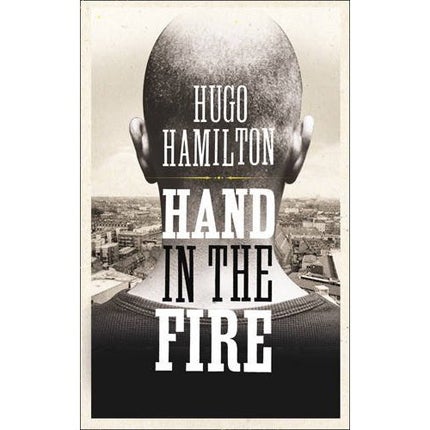Hand in the Fire, By Hugo Hamilton
Outsider in a new age of anomie

"You have a funny way of doing things here." The opening line of Hugo Hamilton's new novel ushers in the author's usual themes of displacement, alienation and exclusion.
His central characters tend to have the perspective of an outsider, an observer "neither here nor there". In Hand in the Fire, the role of bemused narrator falls to Vid Cosic, a young Serbian carpenter exiled to present-day Dublin, whose efforts to fit into the host community cause confusion and bitterness, to himself and others. The epigraph from Hans Magnus Enzensberger to Hamilton's memoir The Sailor in the Wardrobe – "Disconnectedness is our identity" – might stand as a summary of all his books.
Vid is an innocent narrator, on whose shoulders rests the burden of complicity in terrible events, large and small. Wars and political chicanery, violence, double-dealing and betrayal, all swirl around his unoffending head. His current story is centred on his unexpected friendship with a Dublin lawyer named Kevin Concannon, and with Kevin's extended family.
It seems like a gift to the young immigrant. But because the friendship between Vid and Kevin is founded on an act of brutality, an assault in the street, it has poisoned roots that will affect the narrative in various ways. Vid's awareness of his foreigner's propensity to misinterpret signals – sometimes comically, sometimes with a dire import – is outweighed by his wish to ingratiate himself, "to get a foothold here". Whatever mystifies or grieves him, he attributes to an absence of local knowledge: "mishearing things. Misreading people's thoughts. Looking over your shoulder to see who was listening before you allowed yourself to speak".
As a running motif, or an attachment at an oblique angle to the plot, is the story of a young unmarried pregnant woman from the West of Ireland, also named Concannon. As a transgressor against the mores of the 20th century, Mary Concannon is denounced from the altar, and subsequently found drowned. We move into a different area of barbarism and inhumanity. As the rumoured story from Ireland's past, with all its pungency and incompleteness, comes to fascinate Hamilton's narrator, it becomes in the end a means of effecting a resolution, albeit a complex one. This magnificently lucid novel disturbs as much as it entertains with its worrying emphasis on violence of every variety: state-sanctioned or sectarian, domestic or random.
Join our commenting forum
Join thought-provoking conversations, follow other Independent readers and see their replies
Comments
Bookmark popover
Removed from bookmarks